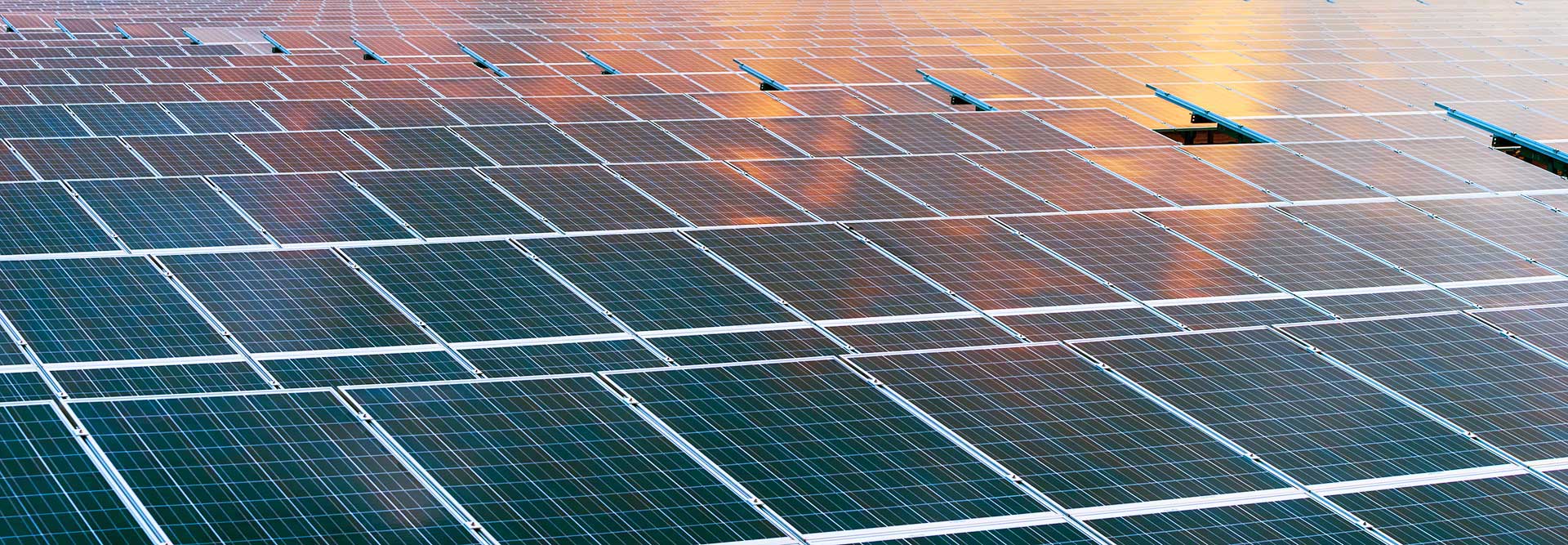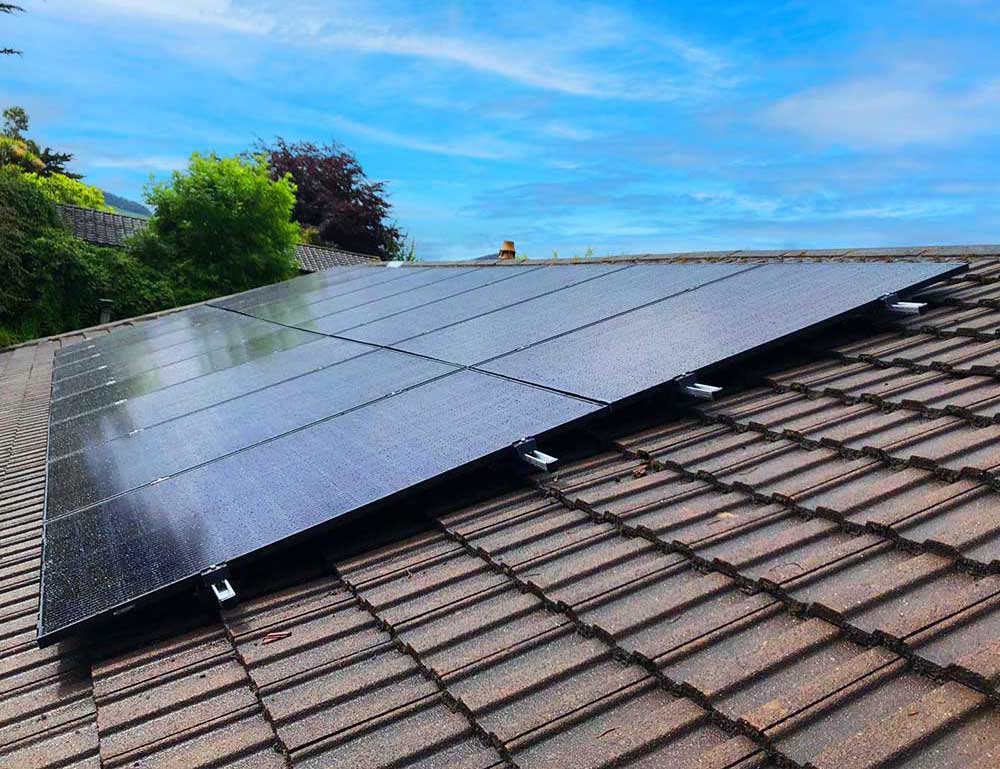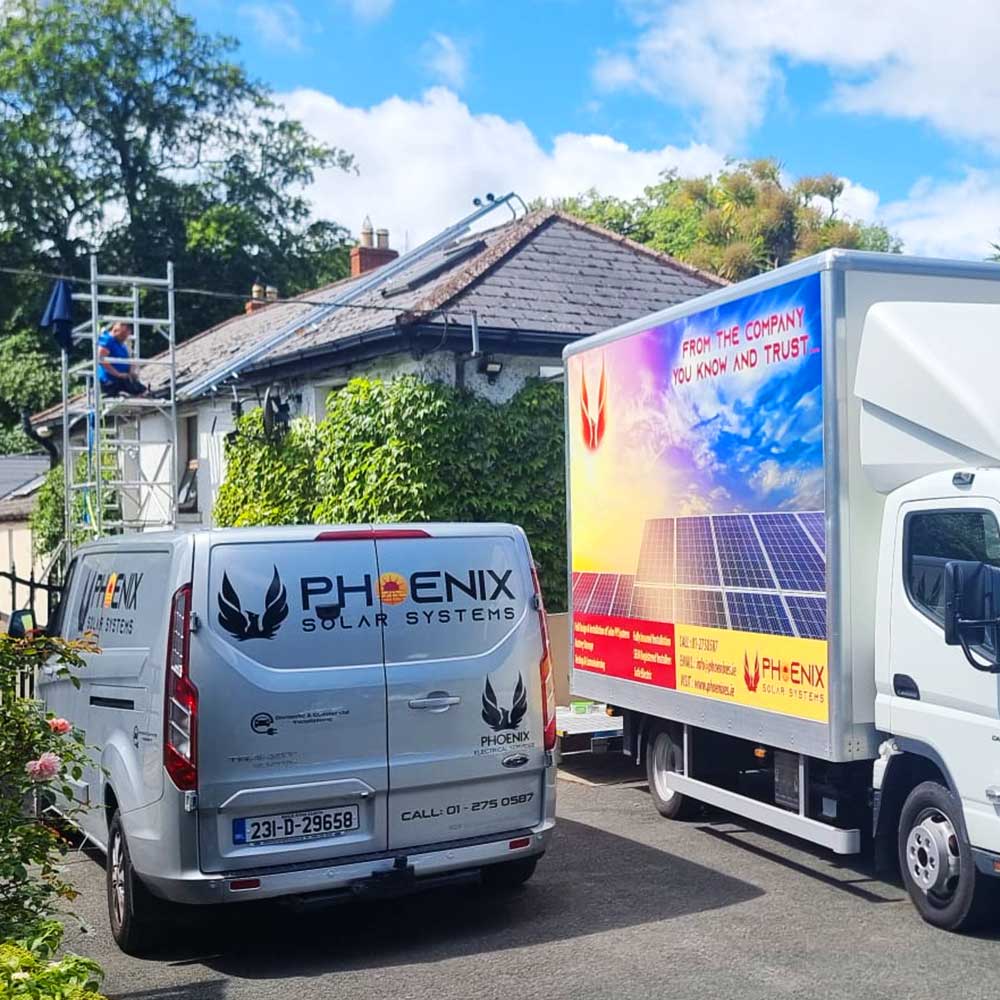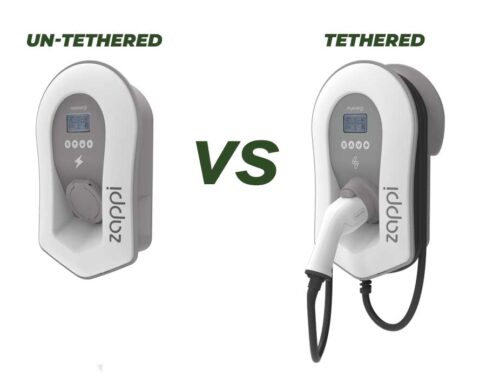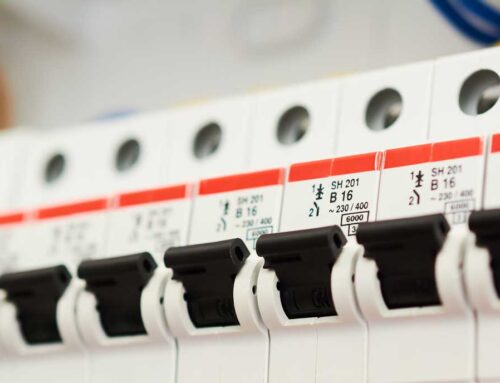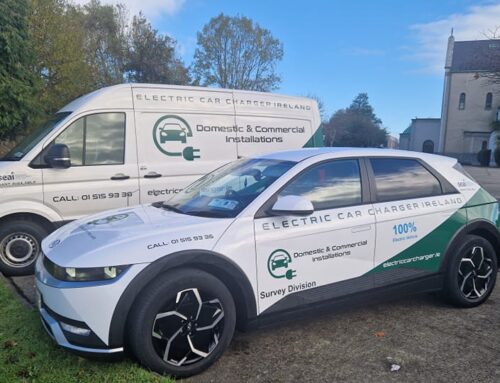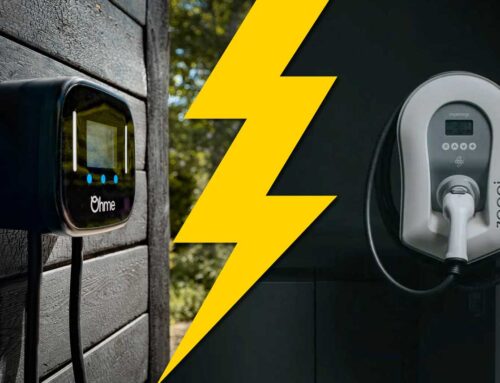Solar EV charging Ireland – Every Irish homeowner who installs solar panels experiences the excitement of seeing their electricity meter reverse direction during sunny days because their home receives free renewable power.
The energy generated by your solar panels can power your vehicle.
Solar EV charging systems allow you to convert sunlight into free driving distance through your vehicle. The growing number of Irish solar panel owners and electric vehicle drivers need to understand efficient charging methods to maximise their solar power system value (more info on Solar panel car charger ).
What Is Solar EV Charging and Why
A solar EV charging setup allows your home’s photovoltaic (PV) panels to power your electric car directly (more info on Ohme ePods). When your solar inverter converts the DC power from your panels into AC, that electricity can either run your home appliances, feed back to the grid, or charge your EV battery (more info on: Home Electric Car Charger ).
Standard chargers draw power from the grid, but a solar-optimised system ensures that your charger prioritises self-generated energy first for charging an EV.. In other words, when the sun’s shining, your car becomes another appliance in your renewable home ecosystem, reducing your carbon footprint (more info on: EVBox Elvi Home Car Charger Review ).
For Irish homeowners, this approach can dramatically lower electricity bills while cutting carbon emissions. With the SEAI predicting continuous growth in rooftop PV adoption through 2025, combining solar and EV technology isn’t a niche upgrade anymore — it’s quickly becoming the smart default for energy-efficient living.
How Smart EV Chargers Turn Sunlight into Savings
The Zappi v2 and EO Mini Pro 3 and Wallbox Pulsar Max smart chargers have built-in features that detect when there is excess solar power available for use in charging your vehicle (more info on EO Mini Pro 3 Review ). The system uses current-transformer (CT) sensors at your fuse board to monitor power flow which allows real-time control of charging output.
Example scenario:
- A 4 kW PV array generates 3 kW of power during a sunny day.
- Your home is using 1.5 kW for appliances, including home EV chargers.
- The charger diverts the remaining 1.5 kW to your car.
Instead of exporting that energy to the grid for only a few cents per kWh, you’re effectively driving for free.
Many modern chargers offer different solar modes:
- The Eco Mode functions through a system that uses both solar power and grid power to maintain uninterrupted battery charging.
- Eco+ Mode operates solely on solar power by stopping the charging process when cloud cover appears.
- Fast Mode — operates at its maximum power capacity without any consideration for available solar energy.
The result?The system provides a smooth charging experience which enables you to use all available solar power for maximum self-consumption and extends the life of your solar energy.
The Economics of Free Miles
Let’s translate sunlight into euros.
The average Irish PV system (4 kWp) produces roughly 3,300–3,800 kWh per year.
A typical EV consumes about 0.18 kWh per km.
That means your panels could theoretically generate enough electricity to drive:
≈ 18,000 – 21,000 km per year purely from sunlight.
Even if only 50% of your solar output goes to your car (the rest powering the house), that’s still a way to reduce your carbon footprint. 9,000–10,000 km of free driving — worth roughly €400–€600 in electricity costs annually (based on €0.45/kWh grid rates).
And because you’re using energy that would otherwise be exported for minimal credit, solar EV charging directly boosts your return on investment (ROI) from your PV installation.
Smart Scheduling & Off-Peak Integration
The night-rate tariffs of Ireland through Smart Meter or Day/Night plans enable users to achieve both solar priority and off-peak optimisation.
Modern smart chargers let you:
- Prioritise solar charging during daylight hours.
- Automatically top-up overnight at reduced rates.
- Adjust start/stop times via smartphone app.
- Integrate weather-forecast automation for cloudy days.
For example, you could charge 70 % of your battery using solar between 11 am – 4 pm, then schedule an overnight boost between 2 am – 5 am when rates are cheapest.
Smart charging strategies include:
-
Solar surplus mode — use excess PV first.
-
Off-peak top-ups — schedule overnight boosts.
-
Weather-aware control — sync with forecasts for charging your electric vehicles.
-
Load-balancing — protect your fuse board from overload.
The combination of solar optimisation and intelligent scheduling delivers a system that’s not only sustainable but also economically precise.
Maximising Your PV Performance
The following technical aspects will help you achieve maximum free energy from your solar panels:
1. Panel positioning
South-facing arrays with an installation angle between 30–40° produce the most reliable energy output for home EV charger installations when installed to face Irish weather conditions.
2. Inverter capacity
The inverter output rating needs to be equal to or higher than the PV system size to prevent clipping of available solar power during peak production times.
3. Battery storage synergy with renewable energy for home EV charging.
A 5–10 kWh battery system enables you to store the extra power generated during midday for later use during evening charging which benefits homes that own two electric vehicles or have irregular charging patterns.
4. Clean & maintain regularly
The operational efficiency of equipment decreases by 5–10% when dust and debris accumulate. The system will achieve its maximum performance when users perform regular panel cleaning and annual system inspections.
5. Watch the horizon: V2H and V2G
Vehicle-to-Home (V2H) and Vehicle-to-Grid (V2G) technology are emerging fast. The Irish EV market will develop into a network of mobile batteries which will store solar energy during daytime hours for evening home use within a short period of time.
Irish Grants and Support in 2025
The SEAI Solar PV Grant currently offers homeowners up to €2,100 toward solar panel installation.
Pair that with the SEAI Home Charger Grant of €300, and you can offset a significant portion of your setup cost.
Both grants apply to home EV charger installations. Safe Electric-registered installations, and combining them makes the ROI even stronger.
Plus, Benefit-in-Kind (BIK) exemptions for home EV chargers. for employees charging company EVs at home, remain valid through 2025 — a useful incentive for company car drivers installing solar-compatible chargers.
Recommended Solar-Compatible Chargers in Ireland
| Charger | Solar Integration | Load Balancing | App Control for managing your home EV charging. | SEAI Approved | Typical Use |
|---|---|---|---|---|---|
| Zappi v2 | Full solar integration (Eco + Eco+ modes) | Yes | MyEnergi app | ✅ | Homes with PV + battery |
| EO Mini Pro 3 | Solar ready (CT sensor kit) | Yes | EO Smart Home app | ✅ | Compact installs, smart tariff use |
| Wallbox Pulsar Max | Solar integration via Power Meter | Yes | myWallbox app | ✅ | Fast charging, multi-car setups |
To dive deeper into renewable energy, see our related guides:
These posts expand on product specs, installation advice, and brand comparisons — helping you choose the perfect charger for your PV system.
Maximising Your PV Performance
The following technical aspects will help you achieve maximum free energy from your solar panels:
1. Panel positioning
South-facing arrays with an installation angle between 30–40° produce the most reliable energy output when installed to face Irish weather conditions.
2. Inverter capacity
The inverter output rating needs to be equal to or higher than the PV system size to prevent clipping of available solar power during peak production times.
3. Battery storage synergy
A 5–10 kWh battery system enables you to store the extra power generated during midday for later use during evening charging which benefits homes that own two electric vehicles or have irregular charging patterns.
4. Clean & maintain regularly
The operational efficiency of equipment decreases by 5–10 %when dust and debris accumulate. The system will achieve its maximum performance when users perform regular panel cleaning and annual system inspections.
5. Watch the horizon: V2H and V2G
Vehicle-to-Home (V2H) and Vehicle-to-Grid (V2G) technology are emerging fast. The Irish EV market will develop into a network of mobile batteries which will store solar energy during daytime hours for evening home use within a short period of time.
Real-World Example: Irish Home with Solar and Zappi
A typical 4-bed semi-D with a 4.2 kWp solar array and a Zappi v2 charger in Co. Wicklow produced:
- 3,400 kWh / yr solar output
- 1,800 kWh used for EV charging at home.
- ≈ 10,000 free km per year for your home EV.
The homeowner achieved both energy savings and reduced grid usage by using solar power during the day and taking advantage of off-peak night electricity rates which resulted in annual savings of €520 and reduced grid imports by 40%.
Final Tips to Maximise Your Free Miles
- Make use of charging during the peak sun hours of the day.
- Use your charger’s Eco+ mode to prioritise solar surplus.
- Users should check for firmware updates on a regular basis since new versions enhance the tracking capabilities of solar systems.
- An energy-monitoring app should be used with your charger to display your energy savings.
- Consider two-EV load management if your household will soon add another car.
Build Smarter — Drive Cleaner — Spend Less
Solar EV charging represents the next evolution of home energy independence in Ireland. By combining PV generation, smart load balancing, and grant-backed installation, homeowners can unlock genuine “free miles” every single day. If you already have solar panels or are planning to install both systems together, it’s worth booking a free consultation with Electric Car Charger Ireland. Our specialists can assess your property, recommend the right solar-compatible charger, and help you maximise your SEAI grant entitlements. Every sunny day is a charging day — make the most of it.
Related search terms: solar electricity, solar installation, solar panels to charge, electric vehicle charging, solar panels and ev, solar compatible, solar pv system, zappi home ev charger, charge your electric car, ev at home, surplus solar, charge your ev at home, charging and solar, electric vehicle with solar, home charging, zappi ev charger, solar pv panels, charging solution, chargers with solar, spare solar, used to charge your ev, solar panel system, solar panels and electric, work with solar panels, solar panels generate electricity, using solar panels to charge, solar installers, ev charge points, solar generation, ev charging methods, zappi car, home charger installed, home electric
Ever wondered: Zappi vs EO Mini Pro 3 — Which Is Better for Irish Homes in 2026?

